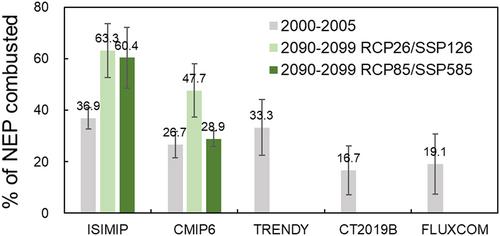Wildfire Emissions Offset More Permafrost Ecosystem Carbon Sink in the 21st Century
Abstract
Permafrost ecosystems in high-latitudes stock a large amount of carbon and are vulnerable to wildfires under climate warming. However, major knowledge gap remains in the effects of direct carbon loss from increasing wildfire biomass burning on permafrost ecosystem carbon sink. In this study, we used observation-derived data sets and Coupled Model Intercomparison Project Phase 6 (CMIP6) simulations to investigate how carbon emissions from wildfire biomass burning offset permafrost ecosystem carbon sink under climate warming in the 21st century. We show that the fraction of permafrost ecosystem carbon sink offset by wildfire emissions was 14%–25% during the past two decades. The fraction is projected to be 28%–45% at the end of this century under different warming scenarios. The weakening carbon sink is caused by greater increase in wildfire emissions than net ecosystem production in permafrost regions under climate warming. The increased fraction of ecosystem carbon sink offset by wildfire carbon loss is especially pronounced in continuous permafrost region during the past two decades. Although uncertainties exist in simulations of wildfire emissions and ecosystem carbon budget, results from different models still show that wildfire emissions offset more permafrost ecosystem carbon sink in the 21st century. These findings highlight that carbon sink capacity of permafrost ecosystems is increasingly threatened by wildfires under the warming climate.


 求助内容:
求助内容: 应助结果提醒方式:
应助结果提醒方式:


